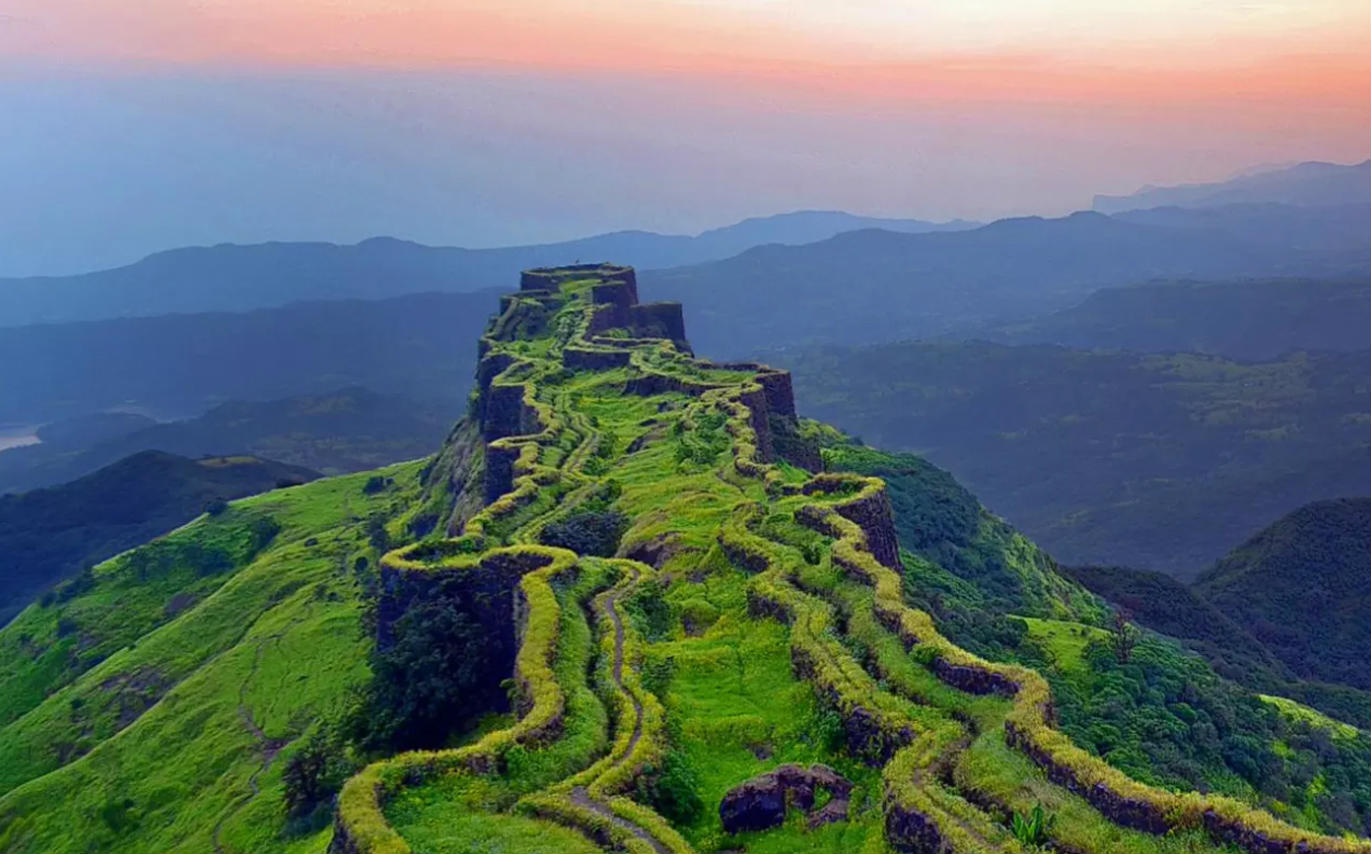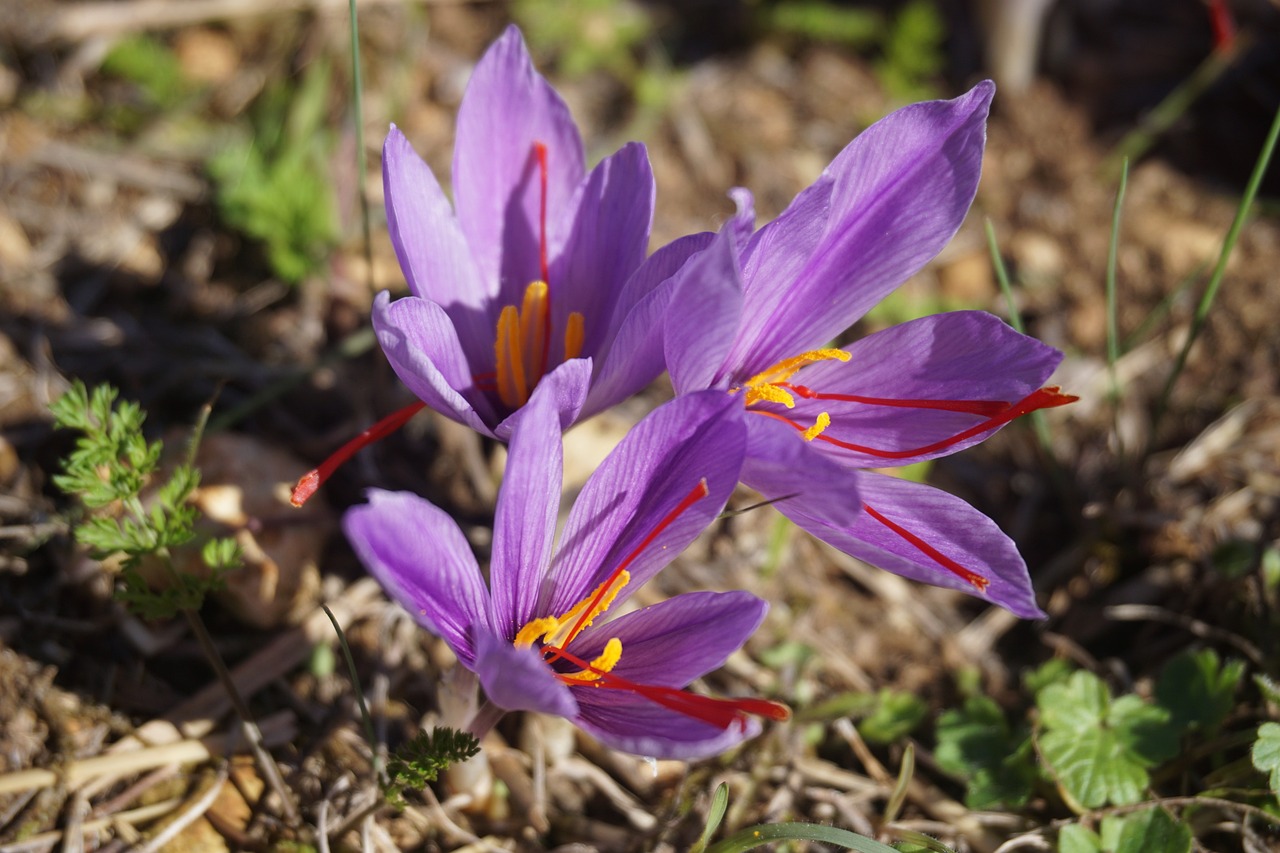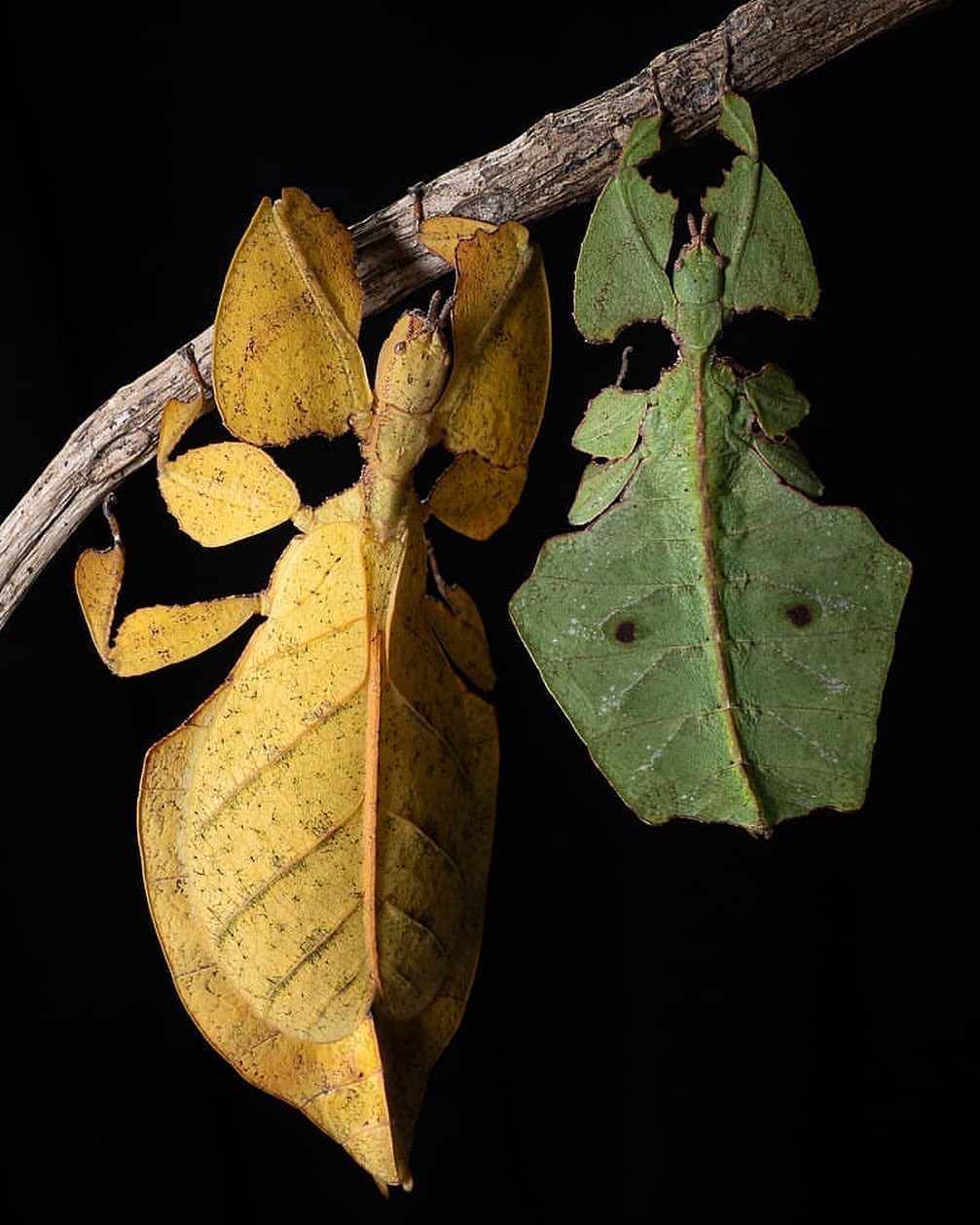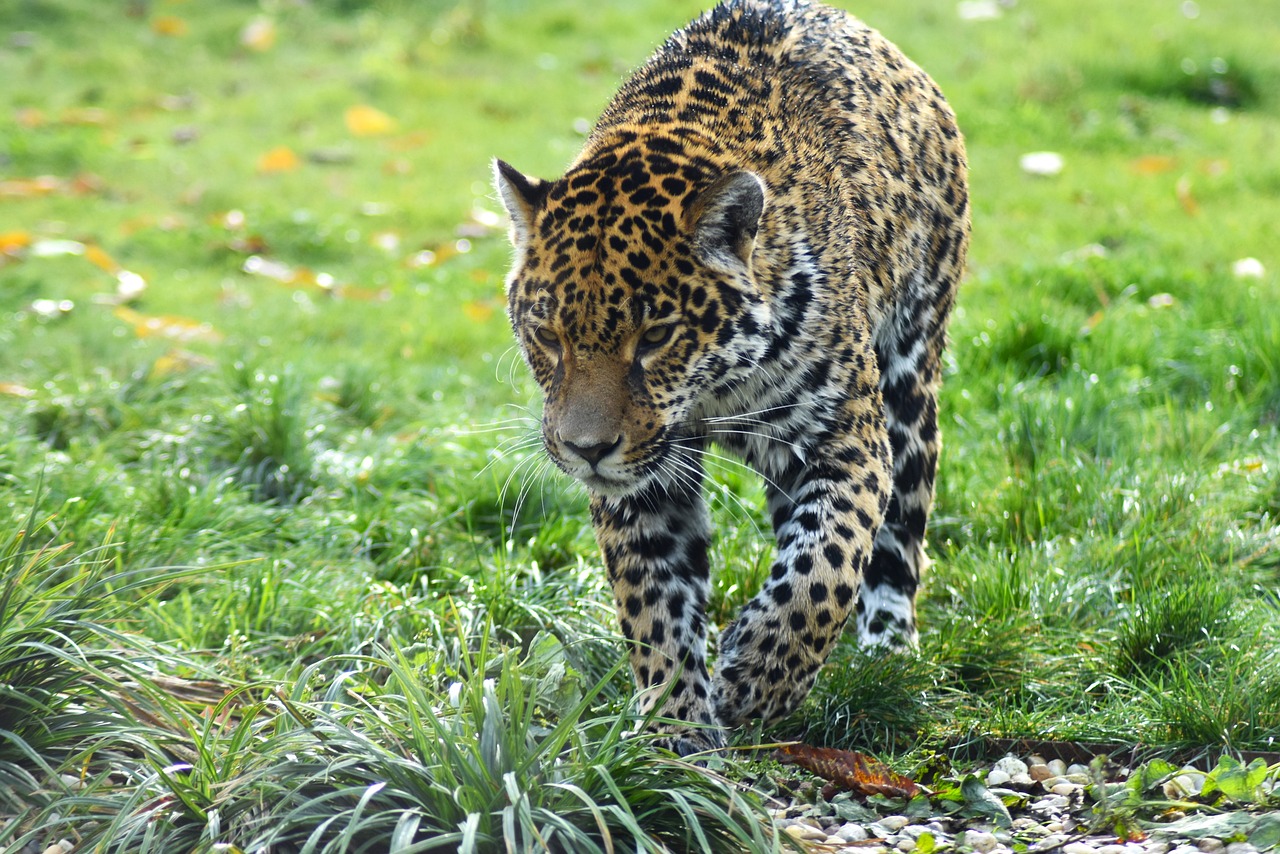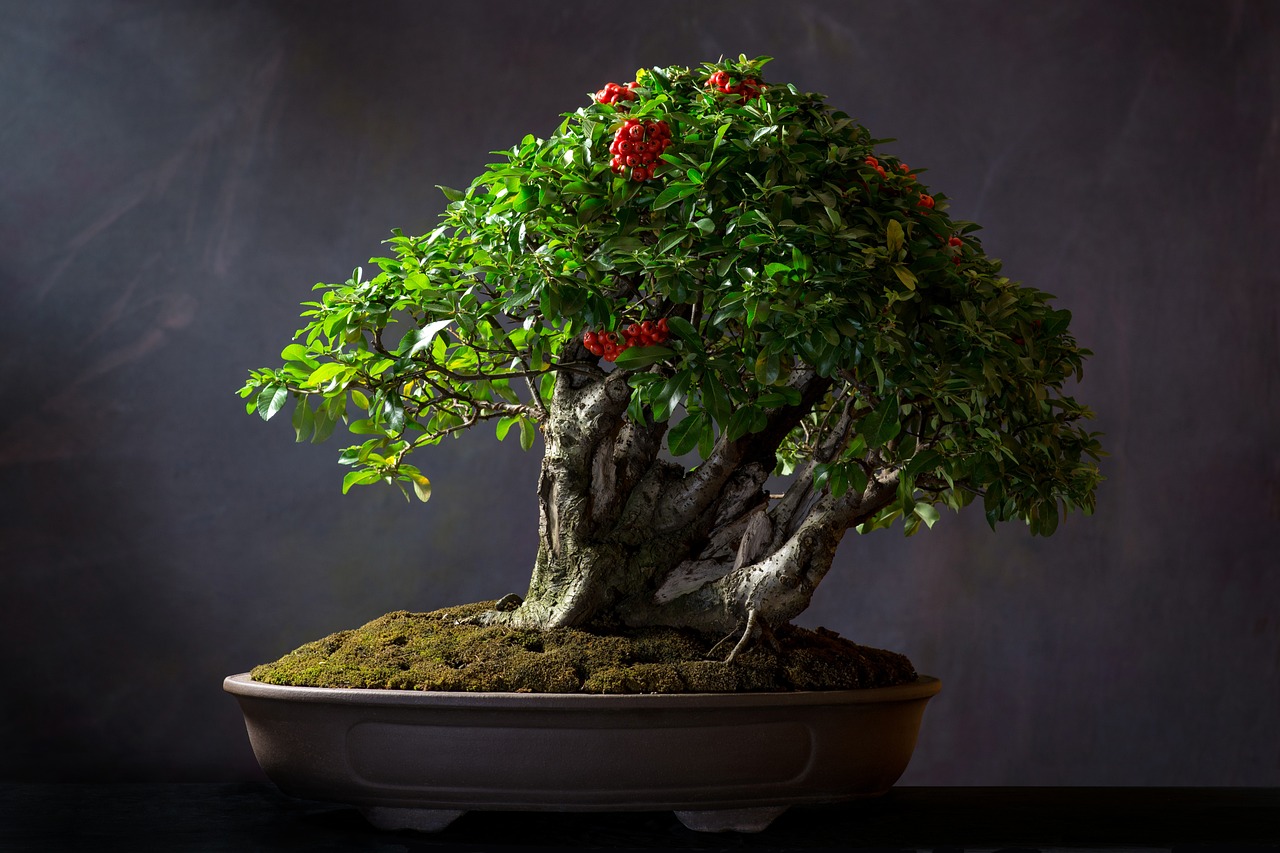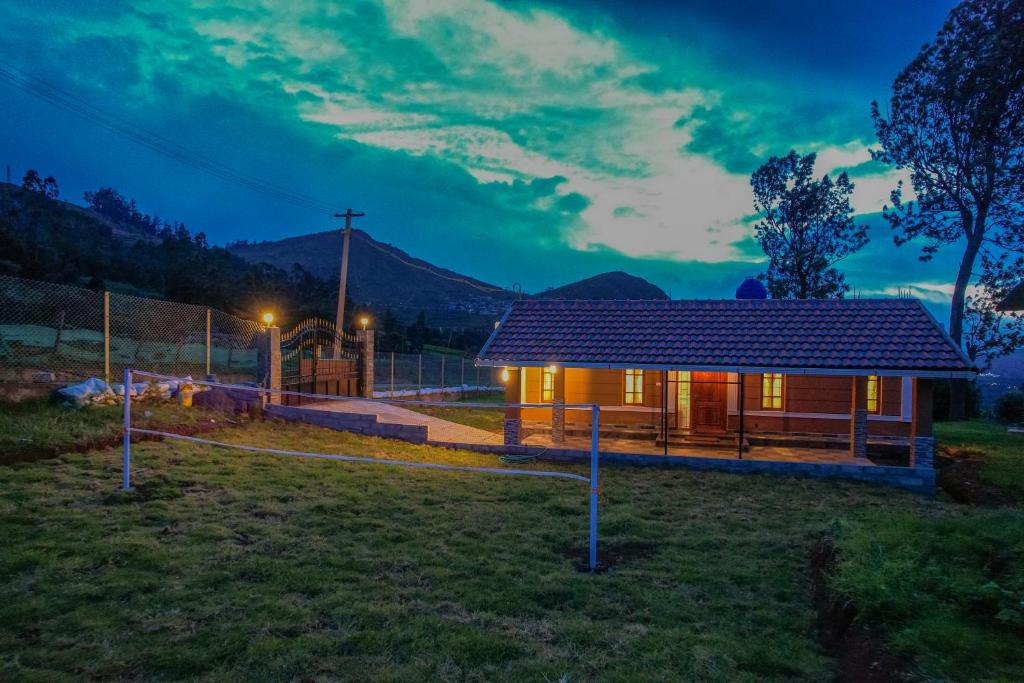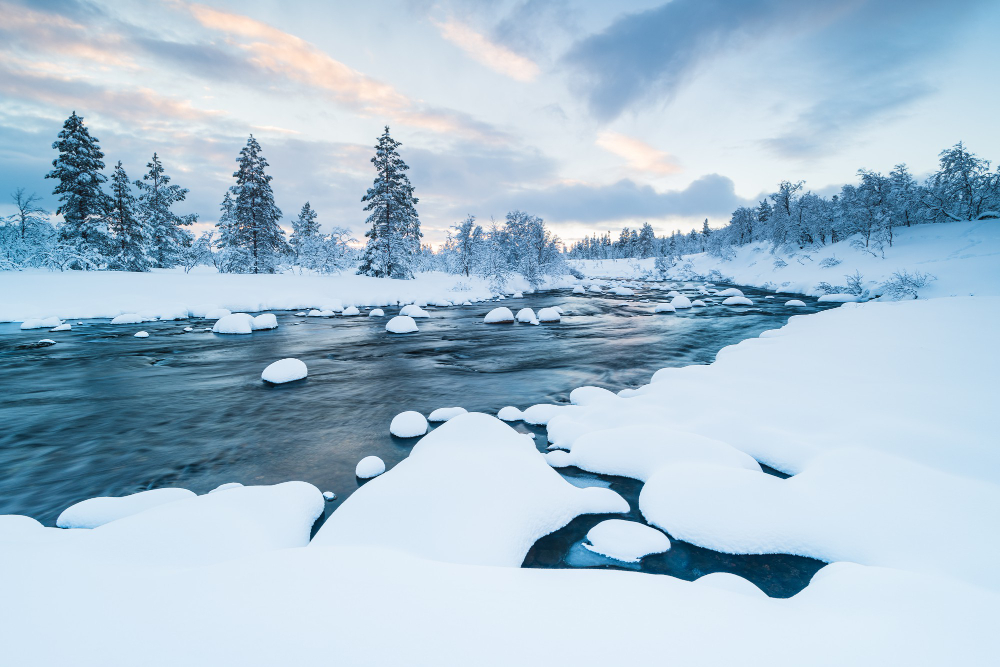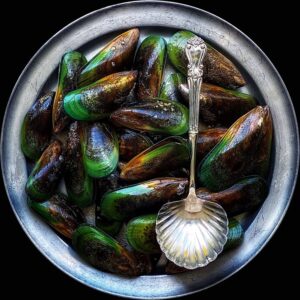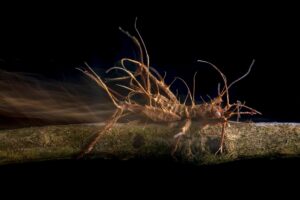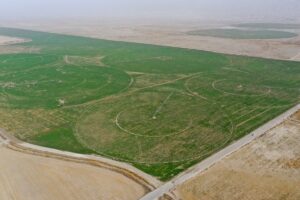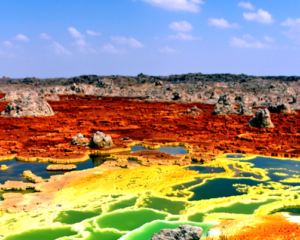 Pin
Pin Photos source: Instagram
There are trees in this world that make you question what you thought you knew about time, color, and the possible. Not the practical trees that bear fruit for breakfast or shade for siesta, but trees that exist as if someone whispered an impossible wish into the earth and the earth answered back with wood and leaves and astonishment.
In certain forgotten corners and celebrated gardens of our planet, trees grow in ways that seem to bend the rules. You’ll find bark that ripples with every color a sunset ever wore. Blossoms that arrive each spring like pink snow that forgot to fall, covering entire canopies until the tree itself disappears beneath its own beauty. Trunks that have been growing since before your great-great-grandmother learned her own name, their roots diving so deep they might be holding conversations with the center of the earth. These trees don’t simply grow—they perform quiet miracles season after season, becoming pilgrimage sites for those who still believe the world can surprise them. The 15 most beautiful trees in the world with pictures are not just botanical specimens to be catalogued and studied. They are proof that nature, left to its own patient devices, creates art that no human hand could imagine, much less replicate. They stand as living testaments to time’s power to shape beauty from a single seed.
Table of Contents
1. The Rainbow Eucalyptus
 Pin
Pin Photo courtesy of Sunken Garden
In the humid forests of the Philippines, Indonesia, and Papua New Guinea, there grows a tree that appears to have been painted by an artist who couldn’t decide on just one color. The Rainbow Eucalyptus sheds its bark the way a snake sheds its skin, but instead of revealing something ordinary underneath, it unveils a carnival. The outer bark peels away in thin strips throughout the year, and beneath each layer waits a new color—bright green at first, then darkening to blue, purple, orange, and finally maroon before the cycle begins again.
Because the bark doesn’t shed all at once, a single trunk becomes a vertical tapestry of streaks and patches, as if someone had spilled every paint can in creation down its length. The effect is so surreal that people seeing it for the first time often reach out to touch it, half-convinced it must be artificial.
This tree can grow absurdly tall, reaching over two hundred feet when conditions smile upon it, and its wood is actually quite valuable for paper production. But that seems almost beside the point when you’re standing before one. The Rainbow Eucalyptus doesn’t need to justify its existence with usefulness—it justifies itself simply by existing, by being so flagrantly, impossibly colorful that it makes you wonder what other secrets the forest might be keeping. In Hawaii, where it was introduced and now grows in cultivated groves, tourists come specifically to see these trees, cameras in hand, trying to capture something that photographs never quite manage to convey. The colors shift depending on the light, the season, the age of the bark, creating a living painting that never looks exactly the same twice.
2. Japanese Cherry Blossoms
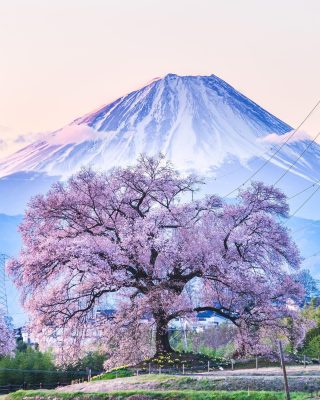 Pin
Pin Photo courtesy of Asumi
The Japanese have a word, hanami, which means the act of viewing flowers, but really it means something deeper—gathering beneath cherry trees in spring to witness beauty that won’t last. The Sakura, as these cherry trees are called, bloom for barely two weeks each year, covering their branches so completely in pale pink and white blossoms that the actual tree vanishes beneath them. Then, almost as soon as they’ve arrived, the petals begin to fall.
They drift down like fragrant snow, carpeting parks and sidewalks and rivers with pink, and the Japanese people sit beneath this gentle storm with sake and poetry, celebrating not despite the brevity but because of it. There’s a particular kind of beauty, they understand, that only exists when you know it’s already leaving.
These trees were cultivated for over a thousand years not for cherries—most ornamental varieties produce fruit too bitter to eat—but purely for those fleeting blossoms. The most famous is perhaps the Somei Yoshino, developed during the Edo period, its flowers opening in clouds of the palest pink that borders on white. When the cherry trees bloom in Tokyo, the weather reports track the “cherry blossom front” as it moves north across Japan, and millions of people plan their lives around it, taking time off work to sit in parks that have become temporary cathedrals of falling petals. The trees have been planted everywhere—lining rivers, filling temple grounds, standing sentinel in schoolyards. They mark the Japanese year more reliably than any calendar, a reminder that the most precious things are often the ones we can’t hold onto, that beauty gains its power precisely because it refuses to stay.
3. Baobab Trees
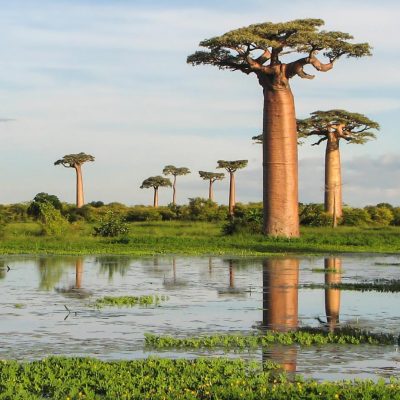 Pin
Pin Photo courtesy of Intriq Journey
There’s an old African legend that says God planted the baobab tree upside down, which would explain why its branches look exactly like roots clawing at the sky. These trees grow fat rather than tall, their trunks swelling to widths that can exceed thirty feet, storing thousands of gallons of water in their spongy wood to survive the merciless dry seasons of the African savanna. Some baobabs are so enormous that people have carved bars, prisons, and even small houses inside their hollow trunks without killing the tree.
They can live for thousands of years, growing so slowly and so strangely that each one develops its own peculiar character—some lean dramatically to one side, others split into multiple trunks that rejoin higher up, creating living archways. When they finally bloom, they produce huge white flowers that open only at night, releasing a scent somewhere between sour and sweet to attract the bats that pollinate them by moonlight.
The baobab doesn’t look conventionally beautiful in the way a cherry blossom or a maple does. Its beauty is more ancient, more patient, the kind that comes from surviving everything the continent can throw at it and still standing. During the dry season, when the tree drops its leaves, it becomes even more skeletal, more root-like, as if it might at any moment pull itself from the ground and walk away on those branch-roots into the sunset. The most famous baobabs have names and histories—trees where kings held court, where communities gathered for centuries, where proposals were made and agreements sealed. They’re not just beautiful; they’re witnesses to time itself, standing in the landscape like elderly relatives who’ve seen empires rise and fall and barely bothered to notice because they’ll still be here long after we’re gone.
4. Wisteria Trees
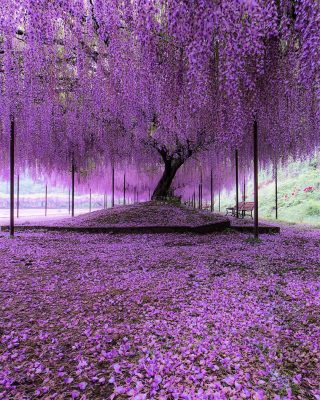 Pin
Pin Photo courtesy of Jun
In Ashikaga Flower Park, north of Tokyo, there grows a wisteria tree that has been alive since the 1870s, its branches now spreading so wide they require steel scaffolding to hold them up like crutches supporting an elderly dancer who refuses to leave the stage. Wisteria isn’t technically a tree at all—it’s a climbing vine that can be trained over decades into tree form, its trunk growing thick and gnarled with age, twisting in patterns that look like frozen water. But when this particular wisteria blooms each spring, it produces cascades of purple flowers that hang down in clusters sometimes reaching four feet long, creating a living ceiling of lavender and violet that seems to drip color into the air.
Visitors walk beneath it as if entering a perfumed cave made entirely of blossoms, the flowers so dense overhead that the sunlight filtering through them turns everything purple-tinged and dreamlike.
The most spectacular wisterias grow on pergolas and frames built specifically to support their weight and show off those hanging flowers to full effect. In the right conditions, a mature wisteria can cover half an acre, its flowers blooming in waves that last for weeks, filling the air with a fragrance sweet enough to make you dizzy if you stand beneath it too long. The Japanese have been cultivating wisterias for centuries, training them with the same patience they bring to bonsai, coaxing the vines to grow horizontally instead of vertically, to spread instead of climb. The result is something that shouldn’t exist—a tree that pours flowers downward like a waterfall frozen mid-cascade, purple and white varieties planted side by side so their colors blend where they meet, creating gradients that shift from pale lavender to deep violet depending on where you stand and how the light hits them.
5. Jacaranda Trees
 Pin
Pin Photo courtesy of Tim’s Garden Centre
There are cities in the world—Pretoria, Buenos Aires, Grafton—where the calendar is marked not by dates but by the day the jacarandas bloom. One morning you wake up and the trees lining every street have exploded into clouds of purple-blue flowers so vibrant they look photoshopped, even when you’re standing right underneath them. The jacaranda is native to South America but has colonized warm climates across the globe with the enthusiasm of something that knows exactly how beautiful it is. The flowers arrive before the leaves do, which means for a few weeks each year, the entire tree becomes nothing but blossoms and bare branches, a purple cloud suspended in the shape of a tree.
Then the flowers begin to fall, and suddenly every sidewalk, every car, every rooftop becomes carpeted in purple, as if the sky itself had been torn into small pieces and scattered down.
In Pretoria, South Africa, they call it the Jacaranda City because seventy thousand of these trees line the streets, turning the entire urban landscape into something that belongs in a fairy tale during October and November. Students at the University of Pretoria believe that if a jacaranda flower falls on your head before exams, you’ll pass—which leads to crowds of young people standing hopefully beneath the trees, waiting to be blessed by falling petals. The trees were brought there in the 1880s, and nobody quite expected them to take over the way they did, spreading and seeding and claiming the city as their own. Now they’re so beloved that there’s talk of making them a protected heritage species, even though they’re technically invasive. That’s the power of beauty—it makes you forgive origins, makes you claim as your own something that arrived as a stranger and decided to stay because the weather suited it and the soil felt like home.
6. Dragon Blood Trees
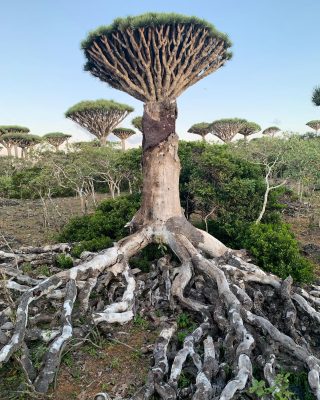 Pin
Pin Photo courtesy of Kalev Erickson
On the island of Socotra, off the coast of Yemen, there grows a tree that looks like it was designed by someone who had never actually seen a tree before—just heard one described badly and decided to improvise. The Dragon Blood Tree grows a thick trunk that suddenly splits into dozens of branches, all reaching upward and outward before abruptly stopping at the same height, creating a shape that resembles an inside-out umbrella, or a mushroom, or perhaps a parasol held by invisible hands. The branches are densely packed with spiky leaves at their tips, forming a flat canopy so perfectly horizontal it looks drawn with a ruler.
This strange architecture isn’t accidental—the shape evolved to capture moisture from the fog that rolls across the island, funneling every precious drop of water down toward the roots. In one of the driest places on earth, the tree engineered its own rain collection system.
But the real magic reveals itself when you wound the bark. The tree bleeds. Not clear sap or sticky resin, but a deep crimson liquid that oxidizes into a dark red resin, which is where the name comes from. Ancient peoples believed this was actual dragon blood, harvested after battles between dragons and elephants, and they used it for everything from medicine to dye to varnish for violins. The trees can live for hundreds of years, and groves of them dotting the Socotran landscape look like something from a planet where evolution took a left turn at some crucial junction. They stand in clusters on the rocky hillsides, their umbrella canopies creating pockets of shade beneath them, remnants of a time when Socotra was wetter and greener. Now they persist as living fossils, strange and beautiful and utterly unlike anything else growing anywhere on earth.
7. General Sherman
 Pin
Pin Photo courtesy of Jas ♡ Socal
In California’s Sequoia National Park stands a tree named after a Civil War general, and the name somehow doesn’t seem grandiose enough. General Sherman is a giant sequoia that weighs approximately 2.7 million pounds—about the same as ten blue whales, if blue whales could root themselves in soil and reach toward the sky. It’s not the tallest tree in the world, but it is the largest by volume, its trunk so massive that its circumference at ground level measures over a hundred feet around. To stand at its base and look up is to feel the way an ant might feel looking at a human, except the ant probably has better spatial reasoning and doesn’t get the same existential dizziness.
This tree has been growing for somewhere between 2,300 and 2,700 years, which means it was already ancient when Jesus walked the earth, already huge when the Roman Empire fell, already a landmark when the first Europeans arrived in California and promptly tried to cut down all its relatives.
The bark of a giant sequoia can grow two feet thick, spongy and fire-resistant, which is part of why these trees live so absurdly long in a landscape where wildfires sweep through regularly. General Sherman keeps growing, adding about half an inch to its diameter every year, which doesn’t sound like much until you remember how enormous it already is—that’s adding the equivalent of a whole normal tree’s worth of wood annually. The branches don’t start until about a hundred and thirty feet up, so the trunk rises like a living tower of cinnamon-colored bark, uninterrupted by anything except its own impossible bulk. People come from everywhere to see it, walking the paved path that circles its base, taking photographs that never quite capture the scale, trying to wrap their minds around the fact that this single organism has been breathing and growing since before recorded history began in most of the world.
8. Angel Oak
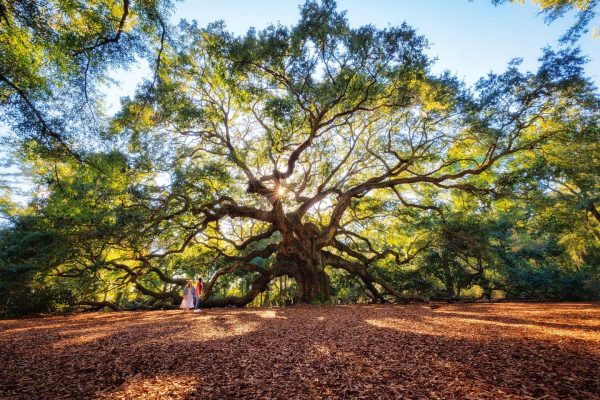 Pin
Pin Photo courtesy of Rob Shenk
On Johns Island near Charleston, South Carolina, there grows an oak tree that has spent somewhere between four hundred and five hundred years learning how to defy gravity in the most beautiful way possible. The Angel Oak is a southern live oak, a species that grows more outward than upward, and this particular specimen took that instruction and ran with it until its branches became something else entirely. The limbs don’t just extend horizontally—they dip and swoop and touch the ground before rising again, creating archways and tunnels you can walk through.
The longest branch stretches out eighty-nine feet from the trunk, a distance so improbable that the tree has had to reinvent its own architecture to support the weight, thickening and twisting its limbs into shapes that look like frozen water, like wooden rivers flowing in slow motion away from the central trunk.
The tree covers seventeen thousand square feet of shade, an area large enough to park dozens of cars beneath its canopy if anyone were foolish enough to drive across the gnarled roots that rise and fall across the ground like ocean waves made of wood. The trunk measures over twenty-eight feet in circumference, deeply furrowed bark that has witnessed hurricanes and wars and centuries of seasons cycling through the same patient rhythm. What makes the Angel Oak particularly beautiful isn’t just its size or age—plenty of trees are old and large—but the way it has chosen to grow, spreading itself across the earth like a creature trying to embrace as much ground as possible. The branches create rooms and corridors beneath them, spaces where people stand and feel held by something ancient that has been bending toward the earth since before their country existed, proving that sometimes the most beautiful way to grow is sideways, patiently, taking centuries to perfect a single gesture of reaching out.
9. Rhododendron Trees
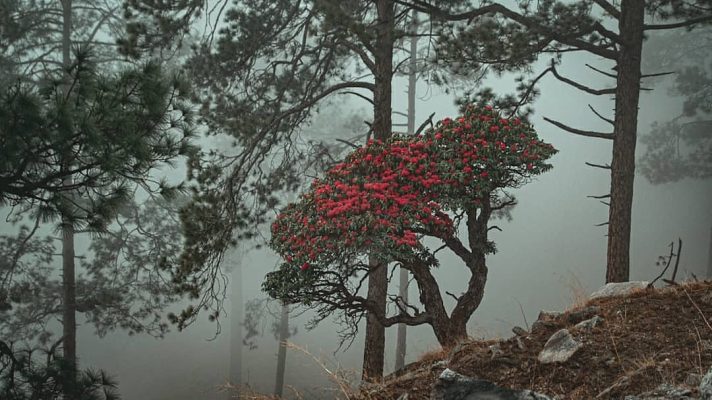 Pin
Pin Photo courtesy of Rohit Gusain
In the high elevations of Nepal, Bhutan, and the Indian state of Sikkim, there grow rhododendrons that have transcended their typical shrub status to become full trees, some reaching heights of sixty feet or more. These aren’t the tidy garden rhododendrons you might see in suburban yards—these are ancient, gnarled giants with trunks twisted by altitude and wind into shapes that tell stories of survival at elevations where the air gets thin and the weather turns murderous without warning. When they bloom in spring, usually between March and May, entire mountainsides suddenly catch fire with color.
Deep red is the most common, a crimson so intense it looks like the mountain itself is bleeding blossoms, but you’ll also find varieties in pink, white, and purple, sometimes all growing together on the same slope, creating quilts of color against the backdrop of snow-capped peaks that still haven’t surrendered to spring.
The tree rhododendron is Nepal’s national flower, and people who trek through the Himalayas plan their journeys specifically to coincide with the blooming season because there’s simply nothing else like it—walking through forests where every tree above you is exploding with flowers the size of your fist, the ground beneath carpeted with fallen petals, the air so thick with color it almost hums. The flowers cluster at the ends of branches in round bouquets called trusses, sometimes containing thirty or forty individual blooms packed together, and when a whole tree is covered in them, it stops looking like a plant and starts looking like a sculpture made entirely of flowers that someone carefully arranged and then abandoned to grow wild. The local people have known these trees forever, using the flowers in traditional medicine and religious ceremonies, but for visitors encountering them for the first time, the sight of a hillside forest transformed into a sea of red and pink blossoms remains one of those experiences that cameras fail to capture and words struggle to describe adequately.
10. Flamboyant Trees
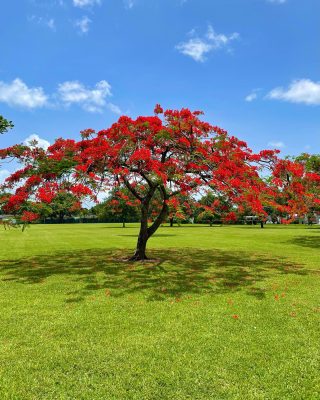 Pin
Pin Photo courtesy of Kent
In Madagascar, where the flamboyant tree was born, they call it by another name that translates roughly to “flower of the flame,” which tells you everything you need to know about what happens when this tree decides it’s time to bloom. The flamboyant, known scientifically as Delonix regia, spends most of the year looking respectable enough—a wide-spreading tree with fern-like leaves that provide decent shade in tropical heat. Then the dry season arrives, the tree drops those leaves, and suddenly it erupts into what can only be described as an inferno of flowers.
Scarlet-red blossoms, each one the size of a child’s hand with four spoon-shaped petals and one larger petal streaked with yellow and white, cover every branch so completely that from a distance the tree looks like it’s been dipped in red paint or perhaps caught fire and decided to burn beautifully instead of turning to ash.
The tree grows fast and wide, its canopy spreading into an umbrella shape that can extend fifty feet across, which means when it blooms, you’re looking at a dome of red suspended above the ground, held up by a trunk that often grows more horizontal than vertical in its enthusiasm to spread out. The flamboyant was introduced to tropical and subtropical regions worldwide, and wherever it landed, it became an immediate sensation—planted along avenues in Miami, Port-au-Prince, Manila, Havana, everywhere the climate allowed it to survive. The blooming season varies depending on location, but when it happens, entire streets transform into corridors beneath red canopies, the flowers so numerous that they fall in drifts, piling up on sidewalks like crimson snow that never melts. There’s something almost aggressive about the beauty of a flamboyant tree in full bloom, as if it’s determined to be the most spectacular thing in the landscape and willing to work overtime to make sure nobody could possibly look at anything else.
11. Maple Trees in Autumn
 Pin
Pin Photo courtesy of Joyce Chasman
There’s a moment each autumn in places like Vermont, Quebec, and Japan when the maple trees perform their annual trick of turning entire landscapes into paintings that seem too saturated to be real. The transformation doesn’t happen all at once—it’s more like watching a slow-motion fire spread through the canopy as chlorophyll breaks down in the leaves and the other pigments that were there all along finally get their moment. The greens fade first into yellow, then deepen into orange, and finally some maples—particularly the sugar maples and Japanese maples—achieve shades of red so vivid they look like they’re glowing from within, as if someone had wired each leaf with tiny lights.
A single maple tree in peak autumn color contains more shades than you’d think possible, individual leaves ranging from pale gold to deep burgundy, sometimes on the same branch, creating a gradient that shifts every time the wind moves through it.
The Japanese have their own version of hanami for autumn leaves—momijigari, which means hunting for red leaves—and they pursue it with the same fervor they bring to cherry blossom viewing. The Japanese maple, smaller and more delicate than its North American cousins, has been cultivated into hundreds of varieties, some with leaves so finely dissected they look like lace, others with colors so dark they’re nearly purple. In Kyoto’s temple gardens, ancient maples bend over ponds so their reflections double the display, red leaves floating on water that mirrors red branches above, creating moments of symmetry so perfect they feel designed rather than grown. The beauty is particularly poignant because, like the cherry blossoms, it’s temporary—a few weeks of color before the leaves fall and winter arrives to quiet everything down. The maples teach the same lesson every year: that endings can be the most beautiful part, that there’s a kind of glory in knowing exactly when to let go and fall gracefully toward the ground in your brightest colors.
12. Bristlecone Pines
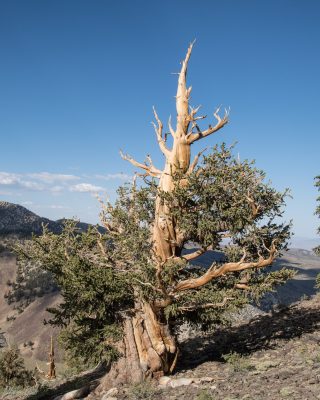 Pin
Pin Photo courtesy of Offer Dub
In the White Mountains of California and Nevada, at elevations where most living things have given up trying, there grow trees that were already ancient when the pyramids were being built. The bristlecone pines live in conditions so harsh—thin air, brutal winds, nutrient-poor soil, temperatures that swing wildly between day and night—that they grow incredibly slowly, sometimes adding less than an inch to their diameter in a century. This tortured, patient growth creates wood so dense it barely rots, which is partly why these trees can live for five thousand years or more. The oldest known bristlecone, called Methuselah, has been growing since before humans invented writing, before the Bronze Age began, before any of the ancient civilizations we learn about in school had even formed.
Its exact location is kept secret to protect it from vandalism, but it’s out there somewhere in those stark mountains, still adding one more ring each year to a trunk that already contains millennia.
What makes bristlecones beautiful isn’t lushness or flowers or brilliant color—it’s the opposite. They’re beautiful the way driftwood is beautiful, the way bones are beautiful, in their absolute reduction to essence. Most mature bristlecones are more dead than alive, their trunks stripped and polished by wind into smooth, twisted sculptures that look like frozen smoke, with only one or two thin strips of living bark still connecting a few branches to the roots. The living parts might have green needles in sparse clusters, but the dead parts—which can persist for thousands of years without rotting—become works of abstract art, wood grain exposed and weathered into patterns that flow and curve like marble. To stand among bristlecones in the high desert is to understand that beauty doesn’t always mean abundance or vigor. Sometimes it means endurance, persistence, the refusal to die combined with the acceptance that most of you already has, creating something spare and sculptural and absolutely unforgettable in its ancient, patient stubbornness.
13. Banyan Trees
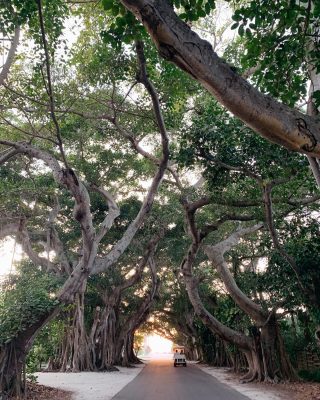 Pin
Pin Photo courtesy of Tracey
There’s a particular kind of sorcery that happens when a banyan tree begins its life. It starts as a seed dropped by a bird into the crack of another tree’s branch, high above the ground, and instead of falling to earth like a sensible seed, it germinates right there in mid-air. The seedling sends roots downward, thin aerial roots that dangle like threads at first, growing longer and longer until they finally reach the soil below. Once anchored, these roots thicken into secondary trunks, and the tree that began as a parasite living on another tree’s branches eventually strangles and replaces its host, then keeps expanding outward indefinitely.
New branches send down new aerial roots that become new trunks, and the process repeats until what started as a single seed becomes something that looks less like one tree and more like an entire grove, a labyrinth of trunks and roots and branches all connected, all technically the same organism spreading across an area that can eventually cover several acres.
The Great Banyan in Kolkata’s botanical garden is over 250 years old and has more than 3,600 aerial roots that have become supporting trunks, creating a forest that covers roughly three and a half acres—all of it one single tree. Walking through a mature banyan feels like entering a cathedral built by something that understood architecture without ever studying it, natural columns rising to support a canopy that filters sunlight into a green, dappled dimness. In Indian and Southeast Asian cultures, banyans are sacred, often growing at the centers of villages where people gather in their shade for markets and meetings and festivals. The trees become landmarks that last for centuries, their constantly expanding structure creating new spaces and corridors as they age, new places for children to play and lovers to hide and old people to sit and watch the world pass by beneath branches that were there before their grandparents were born and will be there long after their grandchildren’s grandchildren have turned to dust.
14. Silk Floss Trees
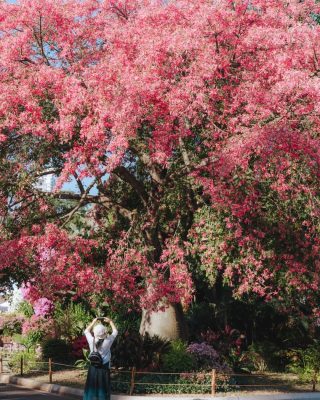 Pin
Pin Photo courtesy of Snapshot
In the plazas and parks of Argentina and Brazil, there grows a tree that seems designed by a committee that couldn’t agree on anything. The silk floss tree, or Chorisia speciosa, starts with a trunk that looks like it was inflated with a bicycle pump—swollen and bulbous, storing water in its tissues for the dry months ahead. Then, as if that weren’t peculiar enough, the entire trunk is covered in thick, conical thorns that jut out at angry angles, making the tree look like it’s wearing medieval armor or perhaps borrowed its skin from a dinosaur that didn’t need it anymore. The trunk is often pale green when young, photosynthesizing through its bark, which gives it an otherworldly appearance even before you get to the best part.
Then autumn arrives in the Southern Hemisphere, the tree drops its leaves, and suddenly those thorny branches explode into blooms that look like they belong to an entirely different species—massive flowers in shades of pink and white, each one five or six inches across with five petals that curl back slightly, revealing a center dusted with cream-colored stamens.
The flowers appear when the tree is completely bare of leaves, which makes the effect even more dramatic—these soft, delicate pink blossoms emerging from branches covered in aggressive thorns, as if the tree is trying to apologize for being so prickly the rest of the year. After the flowers fade, they’re replaced by large green pods that eventually split open to release seeds surrounded by silky white fibers that look exactly like cotton or silk, which is where the tree gets its name. Local people used to harvest this silk for stuffing pillows and life jackets before synthetic materials replaced it. The contrast is what makes the silk floss tree so memorable—that juxtaposition of threatening thorns and delicate beauty, of a trunk that looks armored for battle and flowers that look like they wandered in from a garden party and decided to stay despite the rough company.
15. Copper Beech Trees
 Pin
Pin Photo courtesy of P. Haynes
There are certain trees that seem to hold darkness inside them, not the menacing kind but the rich, velvety darkness of expensive fabric or old wine. The copper beech is one of these—a mutation of the common European beech that decided centuries ago to produce leaves in shades of deep purple-red instead of green, and humans, recognizing beauty when they saw it, have been propagating and planting them ever since. In spring, when the leaves first emerge, they’re a bright, almost translucent copper color that glows when backlit by morning sun. As summer progresses, they deepen into burgundy and purple so dark they’re nearly black in certain light, creating a canopy that filters sunlight into something mysterious and cathedral-like.
The tree itself grows massive and symmetrical, its smooth gray bark like elephant skin, its branches spreading wide and low enough that children can climb into the lower ones, disappearing into that purple darkness like characters stepping into a wardrobe that leads somewhere else.
Copper beeches were favorites of the Victorian era, planted on the grand estates of England and later America by people who understood that a landscape needed contrast, needed something dark and dramatic to make the greens around it seem greener by comparison. A mature copper beech can live for three hundred years, its trunk growing thick enough that three people linking hands might not circle it, its root system spreading just as wide underground as the canopy spreads above. In autumn, the leaves turn bronze before falling, and the tree produces small triangular nuts encased in spiky husks—beechnuts that squirrels and birds harvest with the dedication of accountants balancing ledgers. What makes the copper beech beautiful is that darkness, the way it stands in a landscape like a purple shadow that never moves, the way sunlight passing through its leaves turns burgundy-colored and paints everything beneath it in wine-dark light. It’s a tree that commands attention not by being bright or colorful in the usual way, but by being so deeply, richly dark that you can’t look away from it, a living monument to the fact that sometimes the most beautiful thing in a garden is the one element that refuses to be cheerful.
FAQs
The Rainbow Eucalyptus wins this crown because its colorful bark display lasts year-round, constantly peeling to reveal new layers. Unlike flowering trees that bloom for weeks, this tree performs its color show every single day.
It depends on your climate! Japanese maples and copper beeches thrive in temperate zones, while jacarandas and flamboyant trees need tropical warmth. Check your hardiness zone first—some of these beauties are quite particular about temperature.
Brief blooming is actually a survival strategy. Trees like cherry blossoms concentrate their energy into a spectacular but short display to attract pollinators efficiently, then focus on growing and storing energy for the next year’s show.
Dragon Blood Trees face serious threats from climate change and overgrazing on Socotra Island. Their unique umbrella shape evolved for specific conditions that are rapidly changing, making their future uncertain.
Ancient trees like bristlecone pines and baobabs actually thrive on neglect—harsh conditions make them beautiful. But cultivated beauties like wisteria need patient pruning and training over years to achieve their cascading glory.
